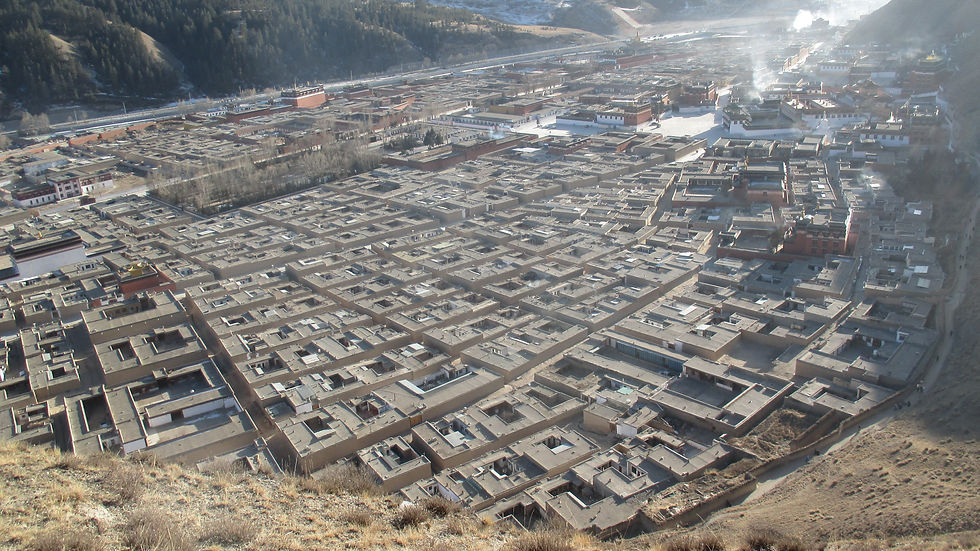Xiahe
- pete
- Jan 12, 2016
- 3 min read
Updated: Apr 26, 2020
Xiahe, Gansu Province 甘肃省,夏河

After over a week in Muslim country, I took the same silk road over the north ridge of the Taklamakan Desert 塔克拉马干 to the northeastern corner of the Tibetan plateau 世界屋脊before jetting south.
Xiahe 夏河 was a great little Tibetan town and I loved my visit. I went on a short hike up in the hills to get a better view. The center road going down the middle clearly splits the Han Chinese section to the right and traditional Tibetan Buddhist section to the left. They are not fond of each other and that's putting it nicely. Han Chinese commercialization of the temple has diluted much of traditional Tibetan way of life. You can see that road cutting diagonal from the main center road through the Tibetan section. The Chinese government put in a beautiful parking lot and welcome center to charge tourists to walk through the monastery.

There is a large prayer walk with prayer wheels encompassing the entire old town. You will see many monks and other Buddhists walking virtually any time of day. Initially, I was apprehensive to take part but an old Tibetan man invited me to join him. He spoke very little Mandarin but it was enough for us to communicate as we did one full revolution of the town while spinning prayer wheels. I appreciate him for inviting me; as I'm not Buddhist, I felt I could genuinely participate in spinning the prayer wheels while walking with him.
In the picture above, one can see Labrang Monastery 拉卜楞寺 in the back left corner, nestled up into the hills. It is the focal point of the city.

This is looking down from the ridge of the hill opposite previous photograph. Labrang Monastery in the top right. These are all monk residences.

Although the monastery has been in use since 1709, much of it was rebuilt in the 1980's. Han Chinese people mercilessly destroyed most of it during the Cultural Revolution 文化大革命 in the 1960's. (Let's add another Chairman Mao statue!)
On the morning I left Xiahe, I woke up extra early to hear morning prayers. It was inside this wall where I sat in the pitch-black, biting-cold morning as monks wandered about, with half a dozen at any given time chanting in a stunning, melodic, deep chorus.


Just beautiful woodwork. I wish I could describe the art within the monastery and surrounding buildings. No one is allowed to take pictures inside, but I was absolutely stunned. The colors, imagery, and totally psychedelic and radical nature of the murals left me speechless. I spent much of three days simply wandering around each building looking at the walls.
Again, it is beyond description, and I encourage anyone with any interest in Tibetan art to make the journey.

Three clock-wise rotations around the building, usually while chanting and fingering prayer beads. During one of my rotations around a building I incidentally followed another monk. It was commonplace.


A leisurely stroll at dusk. It was full moon that night.

After a bit of chanting, it was time for noon prayers for the monks. I sat in on one of the prayers inside the monastry and took part in the ceremony of bowing to each Buddha statue and placing a Khata 哈达 over the outstretched arms of another statue. The intoxicating chanting, people, art, incense, statues, candles, robes and ritual were all beautiful. I can't forget it and feel humbled to have participated in such a ceremony.

After the ceremony I sat outside on the steps and met a Tibetan woman. You can see a little external artwork in the background.
